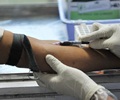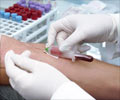Researchers have documented a case of hepatitis B virus (HBV) transmission between two patients at a dentist's office in the United States.
Researchers have documented a case of hepatitis B virus (HBV) transmission between two patients at a dentist's office in the United States. While this kind of infection is exceedingly rare, universal vaccination against the virus would likely have prevented both cases, according to the authors.
The case report, by John T. Redd, MD, MPH, and colleagues from the Centers for Disease Control and Prevention (CDC) and the New Mexico Department of Health, describes the index patient as a sexually inactive 60-year-old woman with no history of intravenous drug use or other potential exposures to HBV who had undergone multiple tooth extractions on a single office visit. A cross-match of the state's Hepatitis B Registry identified the source patient: a 36-year-old woman who had had teeth extracted hours earlier on the same day in the same office by the same surgeon and assistants, and receiving the same medications as the index patient. No evidence of HBV infection was found in any member of the office staff.Blood tests indicated that the source patient had had chronic HBV infection with a high viral load at the time of oral surgery. Genetic analysis showed that virus of the same genotype and subtype was isolated from both patients, and that the isolates had identical DNA sequences in a sampled region. Medical records and blood tests of 25 patients operated on after the source patient showed that 16 (64 percent) were vaccinated and immune to HBV. "I was pleasantly surprised by the high prevalence of immunity," commented Dr. Redd. "It may have helped to limit spread of the virus."
How was the infection transmitted from source to index patient? When investigators visited the office and monitored its operation they found all staff members followed standard infection control practices. The investigators could only speculate that there might have been a lapse in clean-up procedures after the source patient, leaving an area contaminated with her blood.
HBV infection has long been a concern in dental infection control. The blood-borne pathogen is hardy, persisting in dried blood on surfaces for a week or more. It can be present even in the absence of visible blood.
With routine vaccination against the virus in U.S. dental health care personnel over the last two decades, the incidence of HBV infection in this high-risk group has dramatically fallen, and no cases of dentist-to-patient HBV transmission have been reported in the United States since 1987. This is the only known case of patient-to-patient transmission in a dental setting.
The authors concluded that the case underscored the need for meticulous maintenance of blood-borne pathogen infection control for all patients in dental settings. They also said that it reinforced the value of universal childhood HBV vaccination, which has been recommended in the United States since 1991.
Advertisement
Accordingly, since those who engage in high-risk behaviors are generally younger, the editorialists recommended universal HBV vaccination of all adults up to age 40. "Universal age-based recommendations," they argued, "might have prevented both the source patient's infection and subsequent transmission to the index patient in the oral surgeon's office."
Source-Eurekalert
SRM/B











